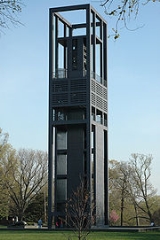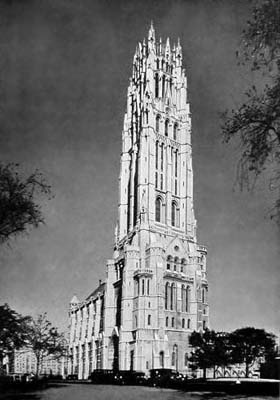Why? These amazing facts and statistics are informative, fascinating, fun to forward to friends, and occasionally hysterical. This post is unbelievably hysterical. We promise. Read it, click on the little envelope-shaped icon at the very bottom of the whole BLUE THING POSTING, and send this to 10 friends, colleagues or business associates with your own custom transmittal email attached. They'll thank you. Oh yes. They surely will.
NOW FEATURING A TAG CLOUD FOR THE WEEK - This cloud is generated from the TNNW RSS Feed and Daily Email Blog at http://TheNationalNetworker.blogspot.com (you should be getting either the RSS Feed or the Daily Email to supplement your membership). The cloud is featured below, following the Amazing New Facts and Statistics.
We strongly encourage READER PARTICIPATION.....
IF YOU have an amazing fact, statistic or hysterical story to share with out readership, tell us right now. Don't be selfish. Share if you care. Just click:
You are invited to submit your favorite amazing fact or little-known statistic and get it published here, boldly showcased in the perfectly rectangular enclosure of BLUE THING #3. But be advised that you must be a Subscriber in order to participate. If you're not already a subscriber, click on the following link before you read on: http://twitlik.com/IN. If you are already a Subscriber, please proceed to the next paragraph for "the elevator pitch."
Commemorating the shipping of the bells for the first American carillon from England to Boston on March 9th, 1745 we proudly present:
 A carillon is a musical instrument that is usually housed in a free-standing bell tower, or the belfry of a church or other municipal building. The instrument consists of at least 23 cast bronze cup-shaped bells, which are played serially to play a melody, or sounded together to play a chord. A carillon is played by striking a keyboard called a "baton" with the fists and by pressing the keys of a pedal keyboard with the feet. The keys mechanically activate levers and wires that connect to metal clappers that strike the bells, allowing the performer, the carillonneur, to vary the intensity of the note according to the force applied to the key.
A carillon is a musical instrument that is usually housed in a free-standing bell tower, or the belfry of a church or other municipal building. The instrument consists of at least 23 cast bronze cup-shaped bells, which are played serially to play a melody, or sounded together to play a chord. A carillon is played by striking a keyboard called a "baton" with the fists and by pressing the keys of a pedal keyboard with the feet. The keys mechanically activate levers and wires that connect to metal clappers that strike the bells, allowing the performer, the carillonneur, to vary the intensity of the note according to the force applied to the key.The carillon is the heaviest of all musical instruments; the total weight of bells alone can be 100 tons in the largest instruments.
The greatest concentration of carillons is still found in the Netherlands, Belgium, and Northern France, where they were symbols of civic pride and status. Some of the most spectacular are now protected by UNESCO as part of the world heritage site the Belfries of Belgium and France.
 The world's largest is housed in New York City's Riverside Church.
The world's largest is housed in New York City's Riverside Church.Since each separate note is produced by an individual bell, a carillon's musical range is determined by the number of bells it has. Different names are assigned to instruments based on the number of bells they comprise:
- Carillons with 23 through 27 bells are referred to as two-octave carillons. Players of these instruments often use music arranged specifically for their limited range of notes.
- The "keyboard" of a carillon is called a baton console.
- A concert carillon has a range of at least four octaves (47 bells). This is sometimes referred to as the "standard-sized" carillon.
The Riverside Carillon in New York City has (or did have—there may be other instruments with larger bourdons) the largest tuned bell in the world, which sounds the C two octaves below middle C on the piano.
-
 Travelling or mobile carillons are not placed in a tower, but can be transported. Some of them can even be played indoor—in a concert hall or church—like the mobile carillon of Frank Steijns.
Travelling or mobile carillons are not placed in a tower, but can be transported. Some of them can even be played indoor—in a concert hall or church—like the mobile carillon of Frank Steijns. - Modern imitation instruments (such as those made by Schulmerich) use semantra
(rectangular metal bars roughly the diameter of a pencil, but of varying lengths) struck by an electric solenoid. They may be played from a keyboard, organ console, or by means of music rolls. The resulting sound is electronically amplified and broadcast by loudspeakers. Although called "carillons" or "electronic carillons", their sound does not conform to the definitions given by the World Carillon Federation or the Guild of Carillonneurs in North America. The GCNA as of 2000 has disqualified all instruments in which more than 12 bells are played electrically. Twelve bells are allowed so that automatic chiming of tunes may take place. Chiming means that one bell at a time is usually played.
 The carillonneur or carillonist is the title of the musician who plays the carillon. The carillonneur/carillonist usually sits in a cabin beneath the bells and presses down, with a loosely closed fist, on a series of baton-like keys arranged in the same pattern as a piano keyboard. The batons are almost never played with the fingers as one does a piano, though this is sometimes used as a special carillon playing technique. The keys activate levers and wires that connect directly to the bells' clappers; thus, as with a piano, the carillonneur can vary the intensity of the note according to the force applied to the key. In addition to the manual keys, the heavier bells are also played with a pedal keyboard. These notes can either be played with the hands or the feet.
The carillonneur or carillonist is the title of the musician who plays the carillon. The carillonneur/carillonist usually sits in a cabin beneath the bells and presses down, with a loosely closed fist, on a series of baton-like keys arranged in the same pattern as a piano keyboard. The batons are almost never played with the fingers as one does a piano, though this is sometimes used as a special carillon playing technique. The keys activate levers and wires that connect directly to the bells' clappers; thus, as with a piano, the carillonneur can vary the intensity of the note according to the force applied to the key. In addition to the manual keys, the heavier bells are also played with a pedal keyboard. These notes can either be played with the hands or the feet. To a musician's ear, a carillon can sound "out of tune." Poorly tuned bells often give this impression and also can be out of tune with themselves. This is due to the unusual harmonic characteristics of foundry bells, which have strong overtones above and below the fundamental frequency. Foundry bells are tuned to have the following set of partials (overtones):
To a musician's ear, a carillon can sound "out of tune." Poorly tuned bells often give this impression and also can be out of tune with themselves. This is due to the unusual harmonic characteristics of foundry bells, which have strong overtones above and below the fundamental frequency. Foundry bells are tuned to have the following set of partials (overtones):- Octave above prime
- Fifth
- Minor third
- Prime and strike tone resultant
- Hum tone (an octave below prime)
THIS ARTICLE--THIS AUTHOR--YOUR FEEDBACK
(1) If you would like to post a comment on this article for this author and for other readers to see, or if you would like to read the comments which have been posted by others, simply scroll down to the very bottom of this article (where it says "Posted by...") and click on the small text hyperlink that says "comments": a pop-up window will open which shows all of the comments posted by others. At the end of the other posts, there is a textbox for you to post your own comment.
(2) If you would prefer to contact the author in confidence, or to write at greater length regarding reciprocal links, special projects or professional issues, simply click on the button in this box labeled "CONTACT AUTHOR," and a pop-up form will magically appear for your use. It even allows you to include web and blog urls, downloads and attachments of all sorts.
(3) If you have not yet become a Member of THE NATIONAL NETWORKER COMPANIES (there is no charge), you should do that using the buttons below. Click on FREE NEWSLETTER button to start the process; then choose either the RSS Feed or the Daily Email delivery option.
*Follow TNNW on Twitter at http://twitter.com/TNNW_BUZZWORKS
*Published by TNNWC. All rights reserved.
*Join our GICBC and receive Your TNNW Newsletter and THE BLUE TUESDAY REPORT! - Click HERE
The National Networker Companies
Forward/Share This Article With Colleagues And Social Media:












No comments:
Post a Comment